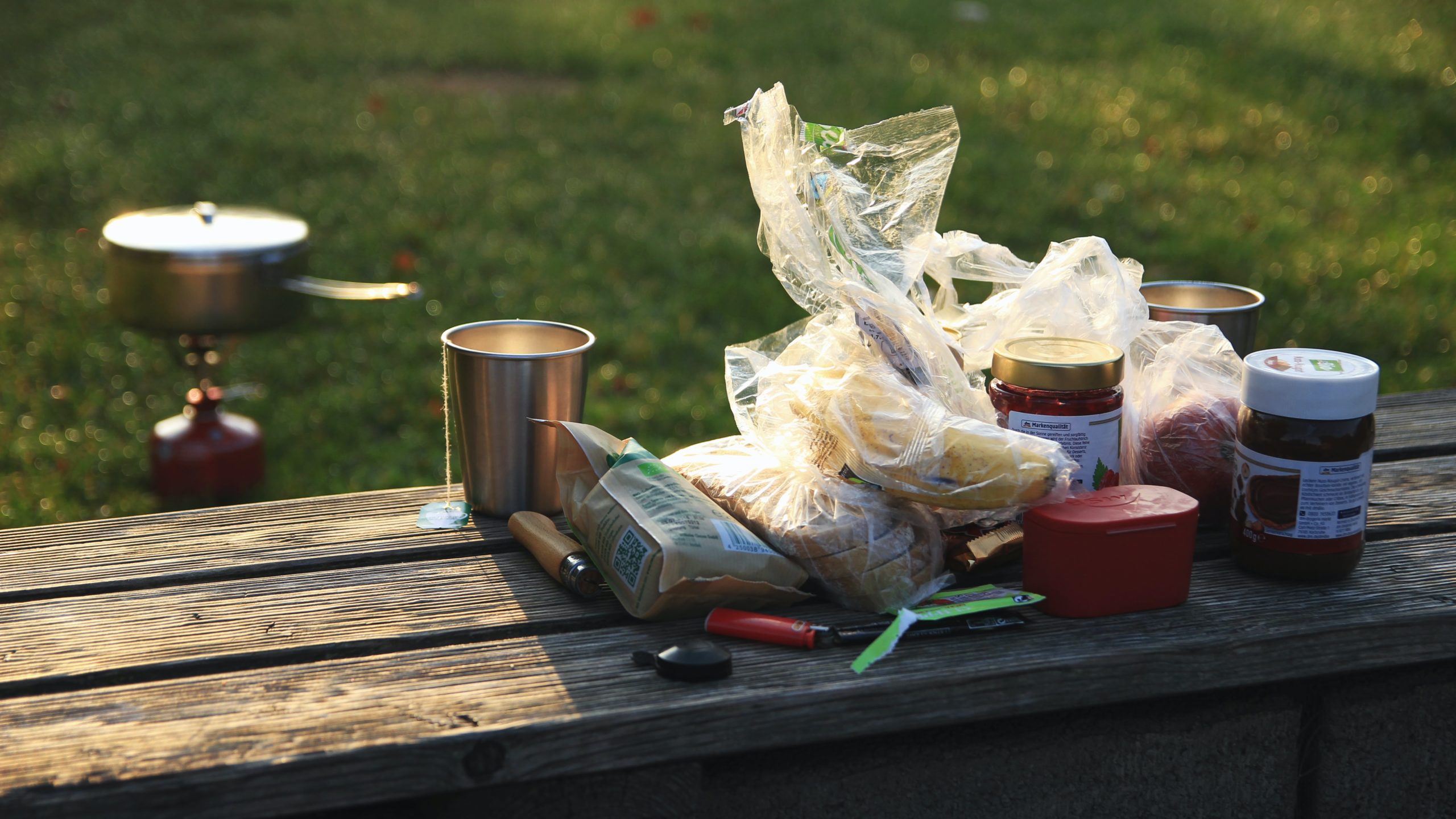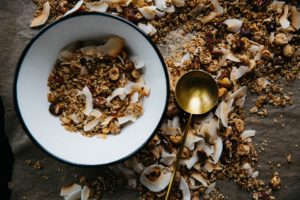A Look Into the National School Lunch Program
What’s the lunch of choice for a kid today? The classic PB and J? Turkey sandwich? A slice of pizza? The truth is that less than fifty percent of kids attending a public school participating in the National School Lunch Program (NSLP) are bringing a packed lunch from home. Approximately 53% of kids who attend a NSLP participating school purchase their lunch on a regular basis. This begs the question, what are these kids eating? Or better yet, how does our government-funded school lunch program pack your child’s lunch?
Based on current economic policies, it seems the goal of the Trump administration is to alleviate the national budget of any unnecessary fees. Multiple fronts are experiencing budget cuts and policy changes to minimize national spending. The NSLP is a prime example of such budget cuts, as its policy changes will save money through altering its nutritional requirements. Recently, the USDA has recanted many of the standards for school lunch and breakfast programs that were implemented under the Obama administration. Changes to the school lunch and breakfast include the replacement of fat-free milk with one percent low fat milk, requiring only half of the grains served to be rich in whole grain, and lifting the stringent targets for sodium consumption.
Previous Progress Under the Obama Administration
In 2012, the Obama administration established strict school nutritional requirements. Michelle Obama undertook the issue of school nutrition programs and helped implement the national school nutrition standards under the Healthy Hunger-Free Kids Act of 2012, following recommendations from the Institute of Medicine. The central points to these guidelines were to increase whole grains and fresh produce consumption, and lower sodium while making school lunch more affordable for low-income families. Also, to decrease the number of kids skipping breakfast, more students were encouraged to part take in the School Breakfast Program (SBP).
These standards originally included that all grain-based products served be rich in whole grain, to increase dietary fiber. The American Heart Association (AHA) supports the evidence that dietary fiber helps lower blood cholesterol levels, the risk of obesity, and risk of type 2 diabetes. To qualify as whole-grain rich, a product must be at least half whole grains, and the remaining half must be either whole or enriched. Serving an enriched grain product contributes to children meeting their need for B vitamins. Now that these guidelines have some leniency, it is likely we will see less whole grain products being served. Therefore, kids will be receiving less vitamins and dietary fiber from their school lunch and breakfast meals.
Going Above and Beyond
This spring, New York City public schools made a progressive move by including healthier cereals in their school breakfast. After Kellogg discontinued the two cereals being served at breakfast, schools chose to supply their cereal from a new organic company, Back to the Roots. The new cereal has half the sugar of the previously supplied Kellogg cereal and still meets the nutritional requirements. This change also comes with an increased price. If someone were to buy the cereals in bulk from Walmart, a box of Back to the Roots Stoneground Flakes would cost about $7.00 dollars a box while Kellogg’s Special K cereal amounts to about $3.50 per box. The prices that the schools pay may vary, but there is clear price elevation associated with purchasing a more nutritious cereal. As guidelines for the NSLP are scaled back, fewer schools may want to compromise serving more nutritious food at a higher cost.
Got Added Sugar?
In terms of the new milk requirement, one percent low-fat milk can now be served. This includes the sweetened, flavored varieties of low-fat milk. When unsweetened fat-free milk was the sole option, kids were not getting any added sugar from their milk. Under the new requirements that allow sweetened milk, children will be getting an additional 13 grams of added sugar if they choose a flavored variety, such as chocolate or strawberry, over plain low-fat milk. On a day-to-day basis, this small change adds a minimal amount of calories, sugar, and saturated fat to children’s diets.
The literature supporting long-term effects of consuming skim vs. one percent low-fat milk has not yet been conclusive. However, putting fat content aside for a moment, all types of milk contain protein, calcium, and vitamin D, which are vital to support a child’s bone growth and development. The AHA recommends children consume 2 cups of milk or dairy per day. Research has identified that children consuming 2 cups of milk per day maximize their production of Vitamin D and minimize the loss of iron stores in the body.
Passing on the Salt
Furthermore, the requirements for low sodium intake have also been scaled back. The Obama administration set three sodium targets to progressively lower the amount of sodium allowed in a meal over a period of 10 years. The first target required elementary school lunches to contain less than 1,230 mg of sodium and was implemented July 1st of 2014. The second target, aimed to limit sodium to less than 935 mg per meal was set to be implemented this year on July 1st. The final target of less than 640 mg per meal was to be established July 1st, 2022.
The Secretary of Agriculture, Sonny Perdue announced in May of 2017 that schools will not be required to meet target 2, instead, they will only need to meet target 1 to be considered compliant with federal guidelines. The AHA recommends that children consume 1,500 mg of sodium per day for maximum heart health. If schools are only held to meet target 1, then children could get up to 82% of the AHA recommendation for sodium from school lunch alone. High sodium intake has been proven to raise blood pressure, but the AHA also recognizes a link between high blood pressure in childhood and adulthood. The choice to push the next sodium target aside will not reduce consumption, leading to a greater chance for children to develop high blood pressure.
Progression or Regression?
Overall, there have been no nutritional gains to the decisions of the Trump Administration with respect to the news NSLP guidelines. Rather than investing in the health of the nation’s children, nutritional guidelines eased back to make room for economic gains. Many people have come forward, taking a stance against the so-called “loosening” of guidelines, including former First Lady Michelle Obama. She supported the Healthy, Hunger Free Kids Act implemented in 2012 to improve the quality of school lunches by serving healthier foods. The Healthy, Hunger Free Kids act also lowered the cost of school lunch for low-income families. At the 2017 annual summit of the Partnership for a Healthier America, she reaches out to parents, beckoning them to “think about why is someone okay with your kids eating crap. Why would you celebrate that? Why would you sit idly and be okay with that?”
Another Perspective: School Food Authorities
On the other hand, multiple school food authorities are glad to be rid of the tight regulations as it means a wider range of acceptable foods, easier access, as well as reduced cost for such foods. When the 2012 guidelines were put in place, many NSLPs around the country searched for brand new food providers. Often, NSLPs were spending more money to get the whole-grain rich and low sodium foods. The companies they abandoned were left in the dust to try to catch up with the shifted requirements, changing recipes for their foods to meet nutritional standards. Aside from increased costs and the challenge to find new suppliers, NSLPs also witnessed greater food waste and lower participation after the implementation of the Healthy, Hunger Free Kids Act. Potential causes may have been aversion to the increased fruits and vegetables, and inclusion of new products or recipes.
Looking Forwards, or Backwards?
These cuts and ‘loosening’ of guidelines are estimated to save over a billion dollars nationally each year. Such savings are due to a decreased cost of supplies and hopefully increased participation in the NSLP. However, these policy decisions have stark impacts on the health of our nation’s children. Easing regulations will translate to higher salt intake, increased saturated fat intake, and lower vitamin and fiber consumption in the diet of school children. Though this federal action may bring economic payoff, it presents no new nutritional benefits for children. Previous presidential administrations took steps forward by renewing guidelines in accordance with science-based nutritional findings. The Trump Administration takes a step backward as it devolves the progress made by the Obama administration.
- How the Trump Administration Packs Your Child’s Lunch - July 27, 2017




